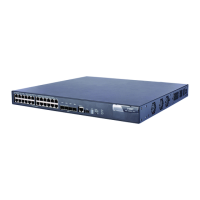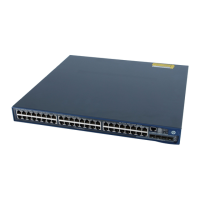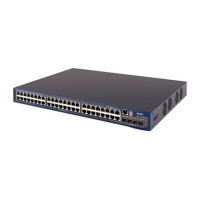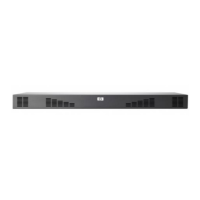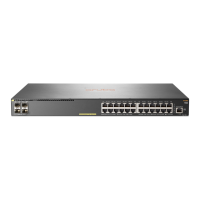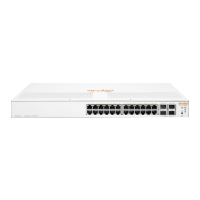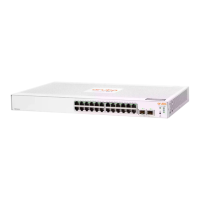9
Multicast suppression threshold as a percentage of the interface
transmission capability. When the threshold is exceeded, the
interface drops multicast packets.
Allow jumbo frame to pass
Maximum length of Ethernet frames that are allowed to pass through
the interface.
Link type of the interface, which could be access, trunk, or hybrid.
VLANs for which the interface sends packets without removing VLAN
tags.
VLANs for which the interface sends packets after removing VLAN
tags.
Peak value of inbound traffic, in Bps.
Peak value of outbound traffic, in Bps.
Last 300 seconds input: 0
packets/sec 0 bytes/sec
Last 300 seconds output: 0
packets/sec 0 bytes/sec
Average rate of input and output traffic in the last 300 seconds, in
pps and Bps.
Input (total): 0 packets, 0 bytes
0 unicasts, 0 broadcasts, 0
multicasts, 0 pauses
Inbound traffic statistics (in packets and bytes) for the interface. All
inbound normal and abnormal packets (including unicast,
broadcast, and multicast), and pause frames were counted.
Input (normal): 0 packets, - bytes
0 unicasts, 0 broadcasts, 0
multicasts, 0 pauses
Inbound traffic statistics (in packets and bytes) for the interface. All
inbound normal packets (including unicast, broadcast, and
multicast), and pause frames were counted.
Inbound packets with errors.
Inbound frames shorter than 64 bytes, in correct format, and
containing valid CRCs.
Inbound frames larger than the maximum frame length supported on
the interface.
For an Ethernet interface that does not permit jumbo frames, giants
refer to frames larger than 1536 bytes (without VLAN tags) or 1540
bytes (with VLAN tags).
For an Ethernet interface that permits jumbo frames, giants refer to
frames larger than the maximum length of Ethernet frames that are
allowed to pass through, which is configured when you configure
jumbo frame support on the interface.
The number of times that the port shut down due to buffer or CPU
overload.
Total number of inbound frames that contained checksum errors and
a non-integer number of bytes.
Number of packet drops because the input rate of the port exceeded
the queuing capability.
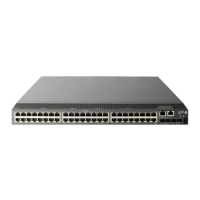
